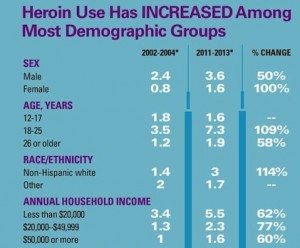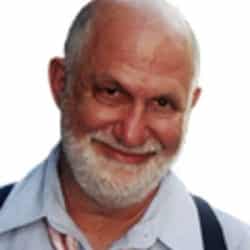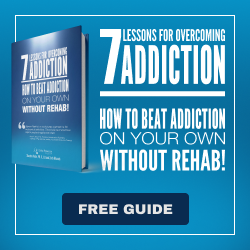Why We’re Losing the Battle with Addiction
When I first started looking seriously at addiction in the late 60s, people would ask why I was interested in it. “We already know everything about addiction,” one student told me.
My answer to him was that I wanted to work on something that will always be with us.
Beyond even my own expectations, addiction has since risen to the very center of America’s consciousness. And, of course, as Love and Addiction, my 1975 book with Archie Brodsky, expressed, addiction was not what was then being taught in medical school— that addiction is somthing confined to the compulsive use of narcotics.
Addiction is real, damaging and commonplace. Yet far from being an external factor that is typically portrayed, addiction is best understood as a part of the normal range of human experiences, steeped in ordinary human experience that results from social and psychological factors we can all recognize.
The most effective responses to addiction are therefore common-sense ones, based in the practical realities of people’s lives. A response which is not founded on these core human factors is destined to fail.
One expert source that sometimes seems to know better, and sometimes not, is the American Psychiatric Association. Since the APA released DSM-5, the fifth edition of its diagnostic manual of mental disorders, in 2013, many have commented on what is included as a disorder and what is not. Others note that the volume refuses to apply the term “addiction” to any of the 17 classes of substances it includes.
But, in keeping with the analysis of Love and Addiction that addiction is not a syndrome limited only to drug use, DSM does apply the term to a non-substance activity: gambling addiction – and nonsensically, to gambling alone, of all of the human activities in the universe!
How bizarre, as reflected in the DSM chapter heading: “Substance-Related and Addictive Disorders.” Get it? There are substance disorders and—separate from those—there are addictive disorders. Well, one addictive disorder.
The gurus behind DSM-5 (chiefly, Charles O’Brien, addiction scientist supreme at the University of Pennsylvania) ruled out sex, love, shopping, eating, et al. and—for the time being (it’s on hold)—electronic devices and video games.
Perhaps, working late into the night, researchers at the National Institute on Drug Abuse (NIDA) will miraculously discover the video-game-addiction section of the brain, allowing O’Brien or his brain-disease successors to add, with a flourish, “videos/electronic devices” under “Addictive Disorders” when DSM is next revised!
I jest, of course. And I also jest that, now that the APA and NIDA have finally recognized that addiction is not limited exclusively to drugs, Archie and I will be awarded the Nobel Prize for having pointed this out in 1975.
We wrote then that addiction can be applied not only to any type of drug, but also to any type of compulsive personal involvement with destructive consequences.
The point, which I would hope is by now obvious, is that nothing is inherently addictive. Addiction is not a chemical reaction, but an experience characterized by the nature of people’s relationship to a specific involvement. As Archie and I put it, “addiction is not something mysterious, something about which our ordinary experience has nothing to say. It is a malignant outgrowth, an extreme, unhealthy manifestation, of normal human inclinations.”
Today, we in the United States are overwhelmed by heroin as our number one addictive concern. The CDC refers to an “epidemic.” Narcotic painkiller addiction is expanding perhaps even more rapidly. Since 2000, benzodiazepine, painkiller and heroin deaths have all risen steadily, hand in hand, to record levels. Thus, the CDC has announced an add-on (in addition to the painkiller and heroin addiction epidemics)—an “epidemic of drug overdose (poisoning) deaths.”
So now the entire nation and political structure are preoccupied with narcotic addiction. After leading with the addiction problem in his State of the Union, President Obama has proposed over $1 billion to combat all these epidemics. Nearly all ($1 billion) is “new mandatory funding . . . to expand treatment for prescription drug abuse and heroin use.” That is, addiction treatment that is already at record levels under the Affordable Care Act.
We’ve been here before. I wonder what has made narcotic addiction our number one problem once again: What are we doing wrong?
In 1973 Yale psychiatrist David Musto wrote The American Disease—a classic about the origins of narcotic addiction in the US. That Musto described a phenomenon 40 years ago, dating back to the beginning of the 20th century, and that we are still lamenting this expanding phenomenon, suggests that how we think about and deal with addiction isn’t working, doesn’t it?
Yet that addiction model persists, even grows. For instance, legions of social commentators reckon that addiction is causing practically all of our social problems.
Recently, a surge in deaths was noted among a surprising group. The New York Times explained: “Opiate addiction is on the rise in the United States. Death rates, partly stemming from substance abuse, are increasing among middle-age white Americans.”
This Times headline left out one important detail contained in the article, however. This rising death-rate has occurred only for middle-aged white Americans “with no more than a high school education.” The death rates for college-educated whites in the age group fell.
That educational element puts a different cast on things, don’t you think? As another Times commentator described: these “middle-aged whites have lost the narrative of their lives. That is, their economic setbacks have hit hard because they expected better. Or to put it a bit differently, we’re looking at people who were raised to believe in the American Dream, and are coping badly with its failure to come true.”
It is the Americans who are falling behind, struggling economically and socially, who most often suffer from addiction and drug-related deaths. While a flood of Times articles and editorials drives home that the heroin epidemic includes white Americans, heroin use remains more than three times as high for the poorest Americans—5.5 out of a thousand, compared with just 1.6 per thousand Americans with household incomes over $50,000.

Rather than thinking primarily in terms of addiction causing social problems, wouldn’t it be more helpful if we recognized the extent to which social problems cause addiction, and acted accordingly?
But that effort is fraught with difficulty, starting with how to reverse the bottom dropping out of so many Americans’ lives. And politicians, despite New Hampshire primary-motivated candidates competing to be the most sympathetic about addiction, aren’t helping.
A video by Republican presidential candidate Chris Christie, for example, has gone viral, drawing support from across the political spectrum. In it, he describes his mother’s smoking addiction causing her death, and the death due to narcotic addiction of his law school friend. He decries the general disdain for people with addiction and the difficulty of getting treatment for them.
Christie said of his mother: “She tried everything she could to quit: She had the gum, the patches, hypnosis. She got cancer at age 71.”
Christie also described performing an intervention on his law school colleague, who was addicted to Percocet: “That started a 10-year odyssey of him being in and out of rehab. He was a drug addict and he couldn’t get help and he’s dead. We need to start treating people in this country, and not jailing them.”
Ever more politicians, from Hillary Clinton and Jeb Bush on through, are trotting out this line (I do agree with the not jailing part).
But neither Christie’s mother nor his friend ever went to jail. Instead, they received treatment time and again—the very thing that Christie says we must do!
Is it possible that the nature of American treatment itself contributes to our addiction epidemic?
Consider that the dominant model of treatment in this country involves convincing patients that they have a disease over which they are powerless. Nora Volkow, the hugely influential director of the National Institute on Drug Abuse (NIDA), demands that “we as a society understand that addiction is not just a disease of the brain, but one in which the circuits that enable us to exert free will no longer function as they should.”
In fact, convincing people that they are lifelong “addicts” without free will is the best way to prevent their recovery! An important study led by University of New Mexico psychologist William Miller found that two critical factors predicted relapse for those treated for alcohol problems: “lack of coping skills and belief in the disease model of alcoholism.”
But then, it’s easier for politicians to blame a disease than the social/political conditions that they help to create, isn’t it?
The addiction treatment world should know better, however.
I don’t think that we should abandon people who are addicted. But when the US has a larger addiction treatment industry—and yet a bigger, faster-growing addiction problem—than anywhere else on earth, current treatments are clearly not doing the job.
In line with this recognition, Tom Horvath, the president of alternative support group SMART Recovery, has created an organization called SEATA, for Self-Empowerment Addiction Treatment. That people’s belief in their capacity to change is the single greatest factor in psychological and behavioral change is one of the underlying principles of the modern cognitive-behavioral therapy movement, which has repeatedly been shown to be the most empirically well-supported therapy model.
Self-empowering addiction treatment is also in line with the modern drug policy reform movement represented by harm reduction. As a movement, harm reduction applies the values of choice, self-respect, and humanity to the millions of people who confront the wide range of addictive proclivities we all face in one way or another. (Have you tried to lose weight lately, or to cut back on your emails?)
Which brings us back to the principal brain disease narrator, Nora Volkow, and her impact on America, starting with the Obama Administration. The White House website trumpets that her “groundbreaking discoveries about the brain have revolutionized our understanding of drug addiction, enabling us to respond effectively to the problem.”
Yet we continue to face headlines of addiction and overdose epidemics over which we, frightened, feel that we have no control—all of which belie the promises that have been made over the last half-century about how brain chemistry will cure addiction, promises which are being amplified as you read.
Contrast the idea of addiction as a chronic, progressive brain disease with the following truth: The majority of people with addictions will “mature out” of them, without any outside intervention, as the government’s own research has repeatedly shown. The key factors in recovery are the growing self-confidence and investment in life that the majority of us achieve as we grow a little older.
How can we effectively “tackle” addiction without acknowledging the means by which most of those affected leave it behind?
Treatment—if necessary—should allow for choice. It should respect people’s integrity and not undercut their faith in themselves. It should not invariably insist on abstinence. And it should fully integrate with the individual realities of people’s lives, and with people’s extraordinary ability to recover naturally.
Proponents of the disease model, whether that of Alcoholics Anonymous or NIDA, by imposing a permanent self-label of “alcoholic” or “addict” and failing to acknowledge natural recovery, exacerbate what they claim to solve. It has been my effort, most recently in my book with Ilse Thompson, Recover! An Empowering Program to Help You Stop Thinking Like an Addict and Reclaim Your Life, to return the power for their lives back into people’s own hands, even when they require help to do so.
The Academy Award-nominated film, The Big Short, depicts the 2008 financial disaster that almost jettisoned the world banking system. Several investment rebels foresaw the coming debacle. When one of the rebels was asked if he thought he was smarter than Ben Bernanke and Henry Paulson, government economics bigwigs who claimed the subprime mortgage bonds were impeccable, the rebel said, “I looked at the mortgages they’re built on—they’re crap.”
The leaders and rank and file of the mortgage and banking system denied all problems until the entire system collapsed. We face a comparable systemic failure in the addiction field, revealed by our epidemics of heroin and painkiller addiction, record drug-poisoning deaths, and a 50% increase in alcohol use disorders. But the leading figures in the addiction field and those who follow them deny their cascading failures. They instead continue the pyramid scheme of treating addictive illnesses, an approach that invests addiction with superhuman strength.
Top bankers and mortgage-makers didn’t suffer after the bond disaster; people who lost their homes and retirement savings did. In the addiction field, the losers are the growing numbers who experience the addictions that “experts” claim to cure, but are actually encouraging.






I know first hand how addiction destroys people. It destroyed me. Spiritually, mentally, emotionally, physically and FINANCIALLY! The non-dischargable debt is opressive! The leans, levies and intrest, not to mention, threats if garnishment of up to 65% of net income! No one can live under such oppression! So why so most relapse? Stress, financial and being labeled! I don’t even have to mention credit do I? It seems we only treat the condition, not the WHOLE person! We are left to drown in a sea of scarlet. And you know what? Not one person I discuss any of this with ever listens. I don’t even think they hear me. So I am thinking of just going back to addiction. My fate is not even a question. No one knows I even exsist, much less cares. Its all made better with pie charts and graphs and statistics! That way, its not personal. We addicts in recovery have more answers than any study will ever prove! Why don’t you start asking the recovering drug addict what barriers they are facing STILL! I am sick to death of hearing how a 30, 60 or 90 treatment stay deems a person a successful treatment. Where’s the follow up? Just a travesty of human life being wasted! As far as I am concerned, the educated know nothing! Addicts and recovery are the missing link. But what do we know, were addicts!